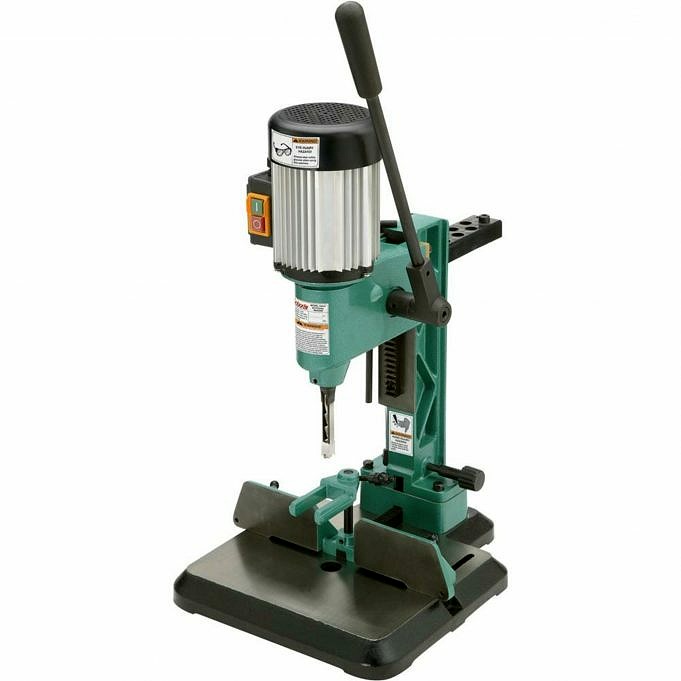I cannot imagine the number of mortise-and-tenon joints Ive cut throughout the years. A Shaker Sewing Desk is one of many pieces of furniture that I have built. It has 55 of these joints. Over the years, I have developed a method to efficiently cut mortises.
No hand tools for me. I dont have the time or the desire to do this work with a chisel and mallet. For me, its not the process of building the furniture, its the completed piece of furniture I strive for. I use a mortise machine.
I started woodworking using a bench-top mortiser. Before purchasing the Powermatic 719A with tilting heads, I actually used two other machines. The 719A is available as a Jet JFM-5, although its white and not gold (click here to read a blog entry about this machine).
The steps to a finished mortise machine are the same for any mortise machine. The first step is layout and tool setup. My preferred method is to locate the center of my stock and align the point on the bit to that line. I turn the machine on as I dial-in this adjustment. Sometimes the points on these bits may be slightly out of center. When the machine is running, the turning point becomes apparent.
After setup, make a series of plunges to cut your slot. Then make sure to reverse the stock and make a second run at the mortise. That guarantees the mortise is centered; even with accurate setup, its possible to be off a minuscule amount and that can have an impact on your work. You may have noticed doors that gently turn from the top to the bottom when you don’t center your mortise.
I use a different setup for wider mortises. For these I position the chisel a measured amount off the machines fence. Make a series of cuts to form one side of the mortise, then reverse the stock and make a second series to create the slot. Again, I know the mortise is centered and equally spaced from the edges of my workpiece. Any additional waste remaining at the center is removed in another pass.
While setup is important, what I find most interesting are the results from the actual cutting of the mortises. The photo at the top of the page is a completed mortise. This photo is a completed mortise. It has an additional step in the mortising process.
If you cut the mortise in a single pass, the slot is created, but the amount of waste remaining in the mortise is substantial. To complete the mortise and leave it clean and nearly waste-free, take a second run in the slot. However, on this pass forget trying to remove as much waste as possible with each plunge and take baby steps. This extra pass is fast and results in a cleaner, more ready-to-go mortise.



